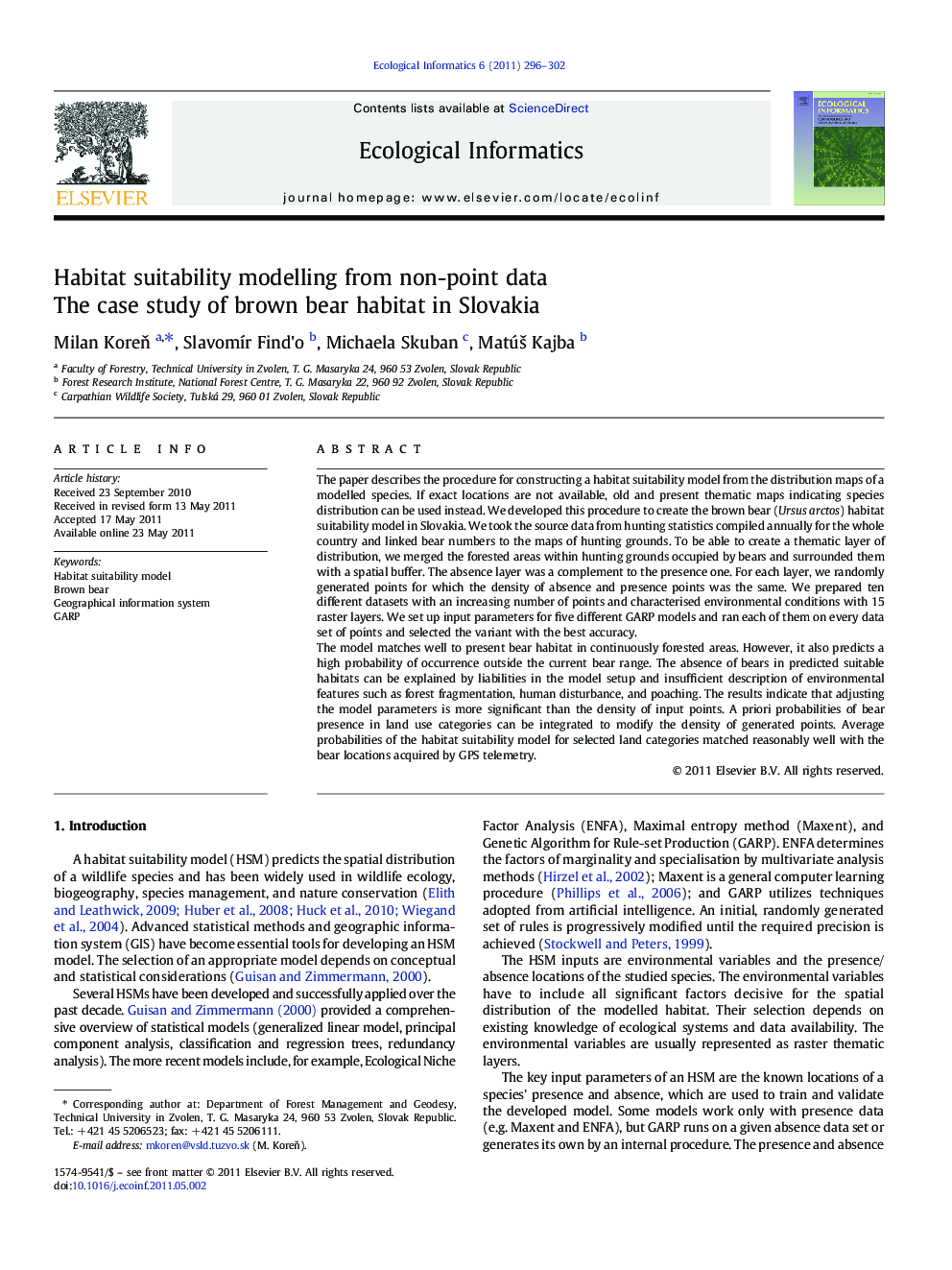| Article ID | Journal | Published Year | Pages | File Type |
|---|---|---|---|---|
| 4375135 | Ecological Informatics | 2011 | 7 Pages |
The paper describes the procedure for constructing a habitat suitability model from the distribution maps of a modelled species. If exact locations are not available, old and present thematic maps indicating species distribution can be used instead. We developed this procedure to create the brown bear (Ursus arctos) habitat suitability model in Slovakia. We took the source data from hunting statistics compiled annually for the whole country and linked bear numbers to the maps of hunting grounds. To be able to create a thematic layer of distribution, we merged the forested areas within hunting grounds occupied by bears and surrounded them with a spatial buffer. The absence layer was a complement to the presence one. For each layer, we randomly generated points for which the density of absence and presence points was the same. We prepared ten different datasets with an increasing number of points and characterised environmental conditions with 15 raster layers. We set up input parameters for five different GARP models and ran each of them on every data set of points and selected the variant with the best accuracy.The model matches well to present bear habitat in continuously forested areas. However, it also predicts a high probability of occurrence outside the current bear range. The absence of bears in predicted suitable habitats can be explained by liabilities in the model setup and insufficient description of environmental features such as forest fragmentation, human disturbance, and poaching. The results indicate that adjusting the model parameters is more significant than the density of input points. A priori probabilities of bear presence in land use categories can be integrated to modify the density of generated points. Average probabilities of the habitat suitability model for selected land categories matched reasonably well with the bear locations acquired by GPS telemetry.
Research highlights►We developed the habitat suitability model of the brown bear in Slovakia. ►Presence and absence points were generated within and outside the known bear range. ►The setup of model parameters was more significant than the number of samples. ►The procedure enables distribution maps to be utilised, instead of point layers.
